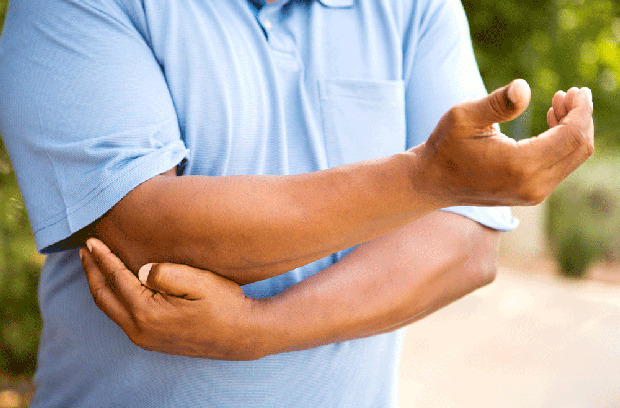The Golfer’s Guide to Finding the Right Specialist for Elbow Pain Relief
Image Source: Google
Golf is a popular sport that requires a lot of repetitive motion. As a golfer, you may be familiar with the aches and pains that can come with the game, particularly in the elbows. Golfer's elbow, also known as medial epicondylitis, is a common condition that affects many golfers. If you are experiencing elbow pain that is interfering with your game or daily activities, it may be time to seek help from a specialist. Here is a guide to help you find the right specialist for elbow pain relief.
Understanding Golfer's Elbow
Golfer's elbow is a condition that causes pain and inflammation in the tendons that connect the forearm muscles to the inner side of the elbow. The repetitive swinging motion in golf can put a lot of strain on these tendons, leading to golfer's elbow. Symptoms of golfer's elbow include:
- Pain and tenderness on the inner side of the elbow
- Weakened grip strength
- Stiffness in the elbow
- Numbness or tingling that radiates down the arm
Types of Specialists
When seeking treatment for golfer's elbow, there are several types of specialists you may consider:
- Orthopedic Surgeon: Specializes in surgical interventions for musculoskeletal issues.
- Sports Medicine Physician: Focuses on treating sports-related injuries and conditions.
- Physical Therapist: Helps with rehabilitation exercises and stretches to improve elbow function.
- Chiropractor: Uses manual adjustments to relieve pain and improve joint function.
How to Find the Right Specialist
1. Consult Your Primary Care Physician
Start by consulting your primary care physician, who can provide a referral to a specialist based on your symptoms and medical history.
2. Research Specialist in Elbow Pain
Look for specialists who have experience in treating elbow pain, particularly golfer's elbow. Check their credentials, read patient reviews, and inquire about their approach to treatment.
3. Consider Specialized Clinics
Consider seeking treatment from clinics or practices that specialize in sports medicine or orthopedics. These facilities are likely to have experts in treating golf-related injuries.
Questions to Ask the Specialist
When meeting with a specialist for the first time, be prepared to ask them questions to ensure they are the right fit for your needs. Here are some questions you may consider:
- What is your experience in treating golfer's elbow?
- What treatment options do you recommend for my specific condition?
- What is the expected recovery time?
- Do you have experience working with golfers or other athletes?
Treatment Options for Golfer's Elbow
Depending on the severity of your golfer's elbow, the specialist may recommend the following treatment options:
- Rest and ice therapy to reduce inflammation
- Physical therapy exercises to strengthen and stretch the forearm muscles
- Bracing or splinting to support the elbow joint
- Nonsteroidal anti-inflammatory drugs (NSAIDs) to relieve pain and swelling
- Corticosteroid injections for severe pain and inflammation
- Surgery in cases of severe or persistent golfer's elbow
Preventing Golfer's Elbow
Once you have found the right specialist and received treatment for golfer's elbow, it's important to take steps to prevent future injuries. Here are some tips to help prevent golfer's elbow:
- Warm-up before playing golf and stretch the forearm muscles
- Use proper golfing techniques and equipment
- Avoid overuse and excessive practice sessions
- Listen to your body and rest if you experience pain or discomfort
- Stay in good overall physical condition with regular exercise
By following these tips and working with the right specialist, you can effectively manage and prevent golfer's elbow, allowing you to enjoy the game of golf without the hindrance of elbow pain.

